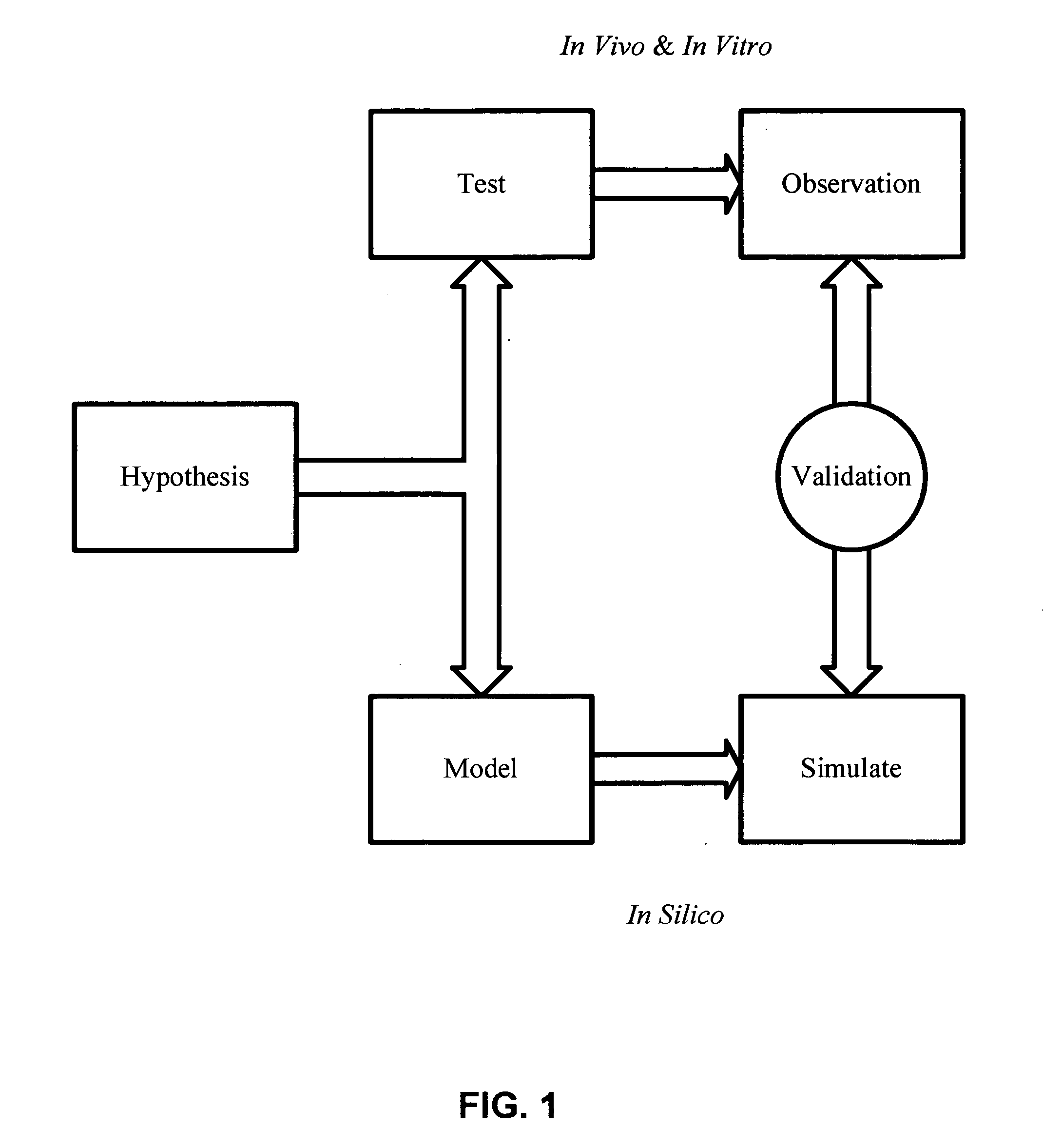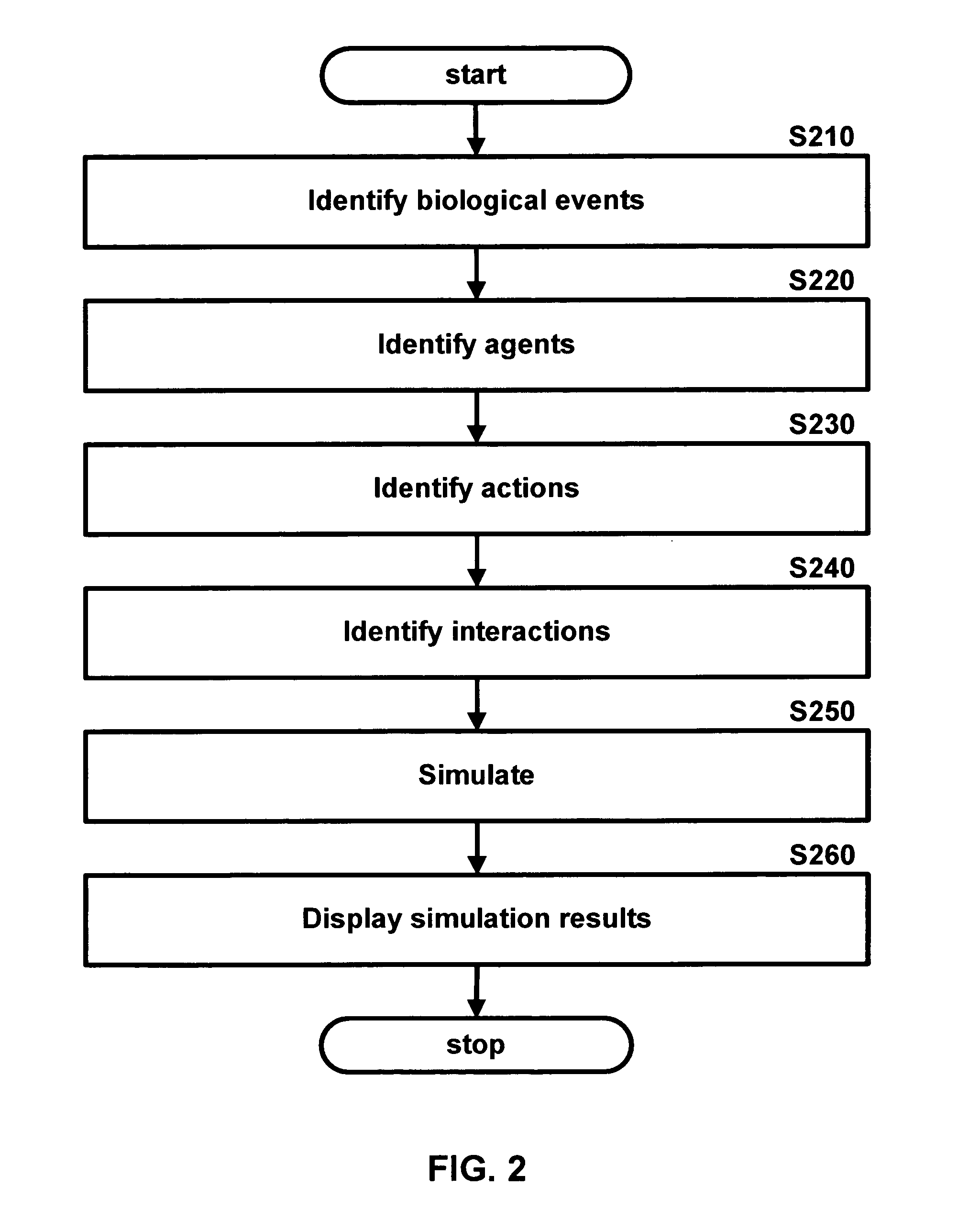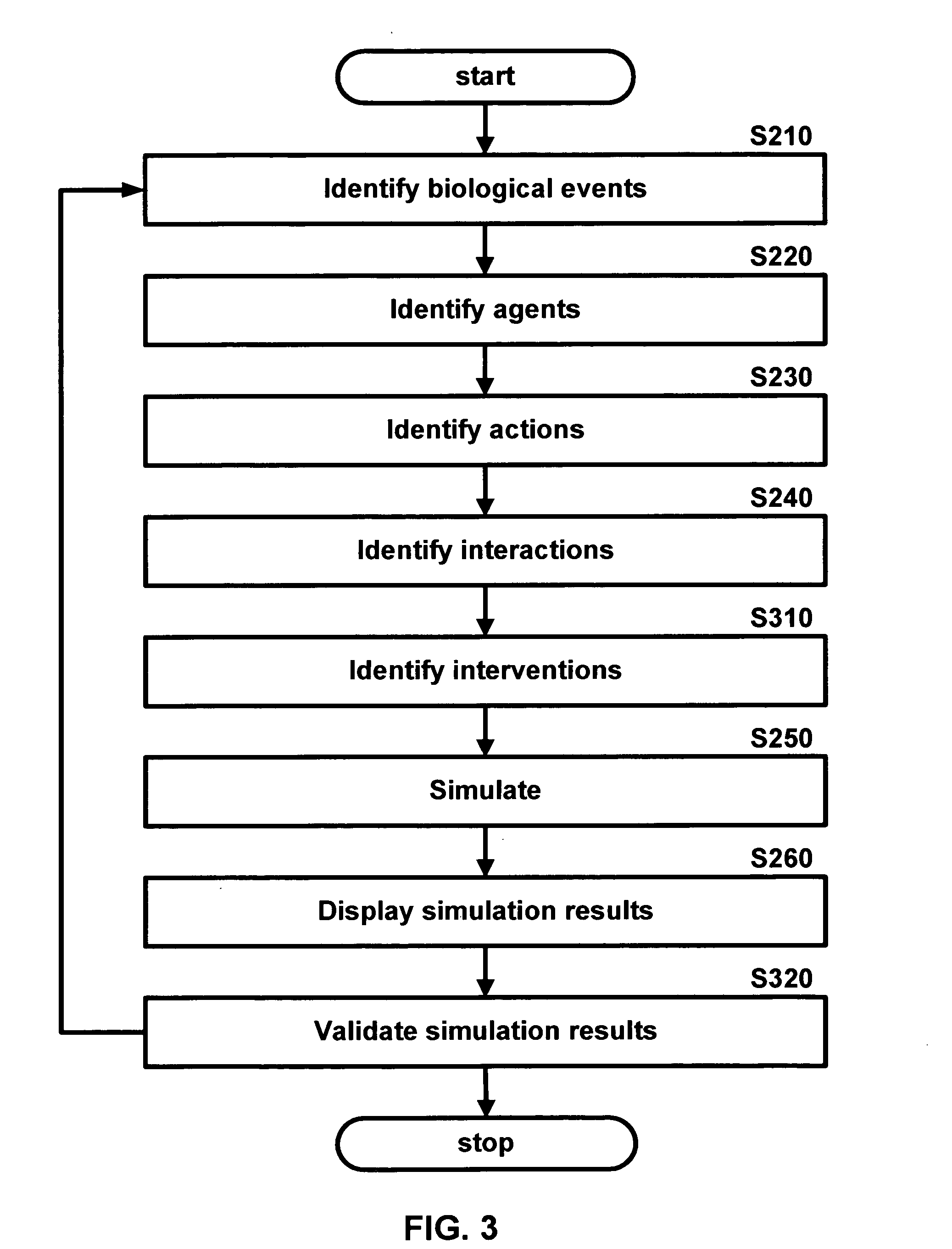Computational modeling and simulating of host-pathogen interactions
a technology of host-pathogen interaction and simulation model, which is applied in the field of computational modeling and simulation of host-pathogen interaction, can solve the problems of difficult linkage between in vitro (mechanistic) studies and in vivo observations, and each exhibits limitations
- Summary
- Abstract
- Description
- Claims
- Application Information
AI Technical Summary
Problems solved by technology
Method used
Image
Examples
example
The Anthrax Model
[0050] An agent-based anthrax model provides an alternative method for undertaking studies that cannot be performed on humans for ethical reasons, as well as studies that lack relevance if performed on animal species serving as human surrogates. FIG. 6 exemplifies steps that that may occur in a discrete event simulation where aerosolized anthrax is the pathogen of interest and the host is exposed through inhalation. The Anthrax Model may begin by retrieving information about the host and pathogen. FIG. 6 exemplifies this retrieval by gathering information regarding the genetic background and the health status and susceptibility of the host to the pathogen of interest, as well as about the particle size and the exposure dose of the anthrax spores (pathogen). Once retrieved, the information may be set as parameters for the simulation. Simulation may begin by exposing in silico the host (human) to the pathogen (anthrax spores). Once exposed, the spore may either be cl...
PUM
 Login to View More
Login to View More Abstract
Description
Claims
Application Information
 Login to View More
Login to View More - R&D
- Intellectual Property
- Life Sciences
- Materials
- Tech Scout
- Unparalleled Data Quality
- Higher Quality Content
- 60% Fewer Hallucinations
Browse by: Latest US Patents, China's latest patents, Technical Efficacy Thesaurus, Application Domain, Technology Topic, Popular Technical Reports.
© 2025 PatSnap. All rights reserved.Legal|Privacy policy|Modern Slavery Act Transparency Statement|Sitemap|About US| Contact US: help@patsnap.com



